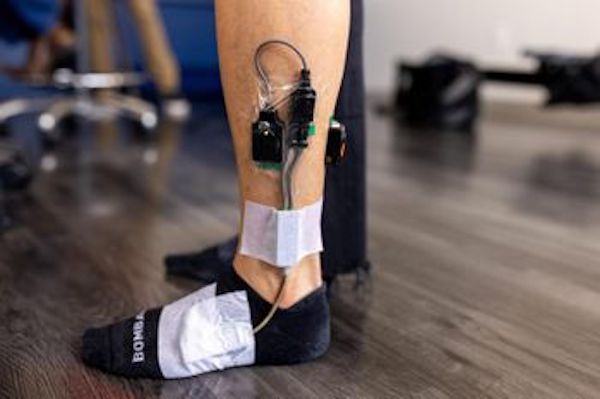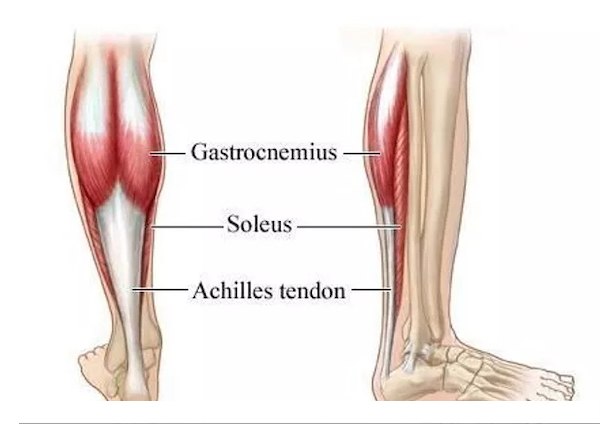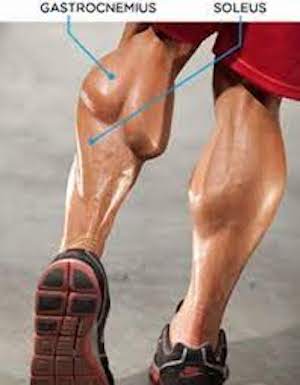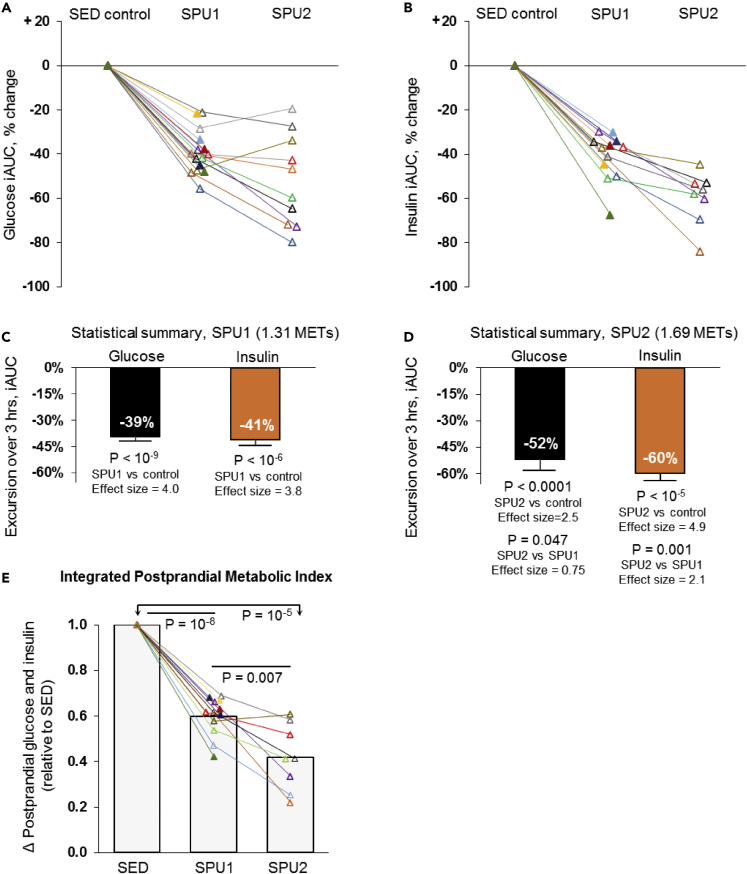Soleus Pushups Will Lower Your Blood Sugar Effortlessly
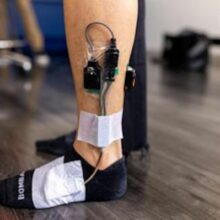
“Soleus pushups” have been shown to lower blood sugar and insulin, lower very-low-density lipoprotein (VLDL) triglycerides and improve metabolism.
This confounds me. It confounds me because the soleus — a muscle beneath the gastrocnemius (calf) muscle — is a very small muscle relative to our total skeletal muscle composition.
How can exercising that tiny soleus muscle be so beneficial to the health of those who sit a lot? I mean, usually the advice is to regularly get up and exercise large muscles to obtain metabolic benefits.
You may have heard that short bursts of large muscle exercises before and after eating a large, carbohydrate-dominant meal can help lower postprandial (after eating) blood glucose (sugar) spikes. That makes some sense if the exercise is, say, squats. But the itty bitty soleus — how does effortlessly exercising that move the blood sugar or metabolism needle at all?
Let’s find out, because if your metabolism is sluggish or you have high blood sugar, and you sit a lot, you’ll want to know about this technique.
A Summary of Soleus Pushups by Dr. Marc Hamilton
Published in the journal iScience in September, 2022, lead scientist Dr. Marc Hamilton calls this study entitled A potent physiological method to magnify and sustain soleus oxidative metabolism improves glucose and lipid regulation the “most important study” ever completed at his Metabolic Innovations lab at the University of Houston.
Why?
Because he and his fellow researchers discovered a simple, easy-to-do solution to the metabolic distress caused by spending ten hours a day (the American average) with low muscle metabolism resulting from inactivity.
Regardless of a person’s level of physical activity, too much sitting has been shown to increase the risk of heart disease, diabetes, dementia and more. More than half of all American adults, and 80% of people over 65, are living with metabolic problems caused by either diabetes or prediabetes.
Having a low metabolic rate while seated is especially troublesome for people who are at high risk for age-associated metabolic diseases such as metabolic syndrome and type 2 diabetes.
Dr. Hamilton said inactive muscles require less energy than most people seem to understand, saying it’s “one of the most fundamental, yet overlooked issues” guiding the way toward discovering metabolic solutions to assist in preventing some age associated chronic diseases.
He says:
“All of the 600 muscles combined normally contribute only about 15% of the whole-body oxidative metabolism in the three hours after ingesting carbohydrate. Despite the fact that the soleus is only 1% the body weight, it is capable of raising its metabolic rate during SPU contractions to easily double, even sometimes triple, the whole-body carbohydrate oxidation.
We are unaware of any existing or promising pharmaceuticals that come close to raising and sustaining whole-body oxidative metabolism at this magnitude.”
Watch this short video where Dr. Hamilton describes his study:
These are the key points made by Dr. Hamilton in the video above:
- Diseases such as type 2 diabetes/pre-diabetes, cardiovascular disease and dementia have a major metabolic underlying cause.
- The soleus muscle, the primary lower leg muscle used for standing, walking and running has a unique set of anatomical and cellular properties that make it special.
- Activated in a precise way, the soleus use more energy than normal, especially given its small size relative to many other skeletal muscles.
- It appears that soleus pushups activate the soleus the same way that walking does, given that in both instances the ankle is bending and the heel is rising, but the motor activity is different. When walking, the soleus muscle is turned off once the heel starts to rise; whereas when doing soleus pushups, the soleus muscle is simultaneously shortening, while the motor neurons are activated intensely.
- Participants in the study could lower their blood glucose by 50% with a single 10 minute session of doing soleus pushups.
- A special mixture of fuels are used to fuel soleus pushups, rather than intramuscular glycogen (stored carbohydrate, typically used during exercise), such as blood glucose and blood lipoproteins (particles made of protein and fats (lipids) that carry cholesterol through the bloodstream to cells).
Now, let’s expand this a bit and learn more about the soleus muscle itself, the metabolic effect of soleus pushups, and how to do them.
What Is The Soleus Muscle?
The soleus, one of approximately 600 muscles in the human body, is a posterior leg muscle that runs from just below the knee to the heel. It might not be so prominent on you, but it is on beefcakes:
KenHub, an anatomy website, describes the soleus muscle as a wide flat leg muscle located on the back of the lower leg. It connects from just below the knee to the heel, and lays immediately deep to the gastrocnemius.
These two muscles, along with the plantaris muscle, belong to the group of superficial posterior compartment calf muscles. Soleus’ contraction results in strong plantar flexion (movement of the foot in a downward motion away from the body). The soleus also allows us to maintain an upright posture due to its important role as an anti-gravity muscle.
Soleus has two major functions:, says Physiopedia:
- To act as skeletal muscle:
- Along with other calf muscles it’s a powerful plantar flexor and has a major contribution in running, walking and dancing.
- It is also a major postural muscle designed to stop the body from falling forwards at the ankle during stance.
- In the seated calf raise (knees flexed approximately 90º), the gastrocnemius is virtually inactive while the load is borne almost entirely by the soleus.
- In moderate force, the soleus is preferentially activated in the concentric phase, whereas the gastrocnemius is preferentially activated in the eccentric phase.
- Human soleus muscle tissue consists predominantly of slow twitch fibers, though the composition can range between 60 and 100% slow fibers.
- To act as muscle pump:
- The soleal pump assists with venous return from the periphery to the heart when upright as the venous circulatory system passes through the muscle tissue.
Like a lot of things in are body that we don’t think much about, the soleus does a lot of good things, including improving overall metabolism, something that needs a boost if you sit a lot.
Soleus Pushups’ Metabolic Effect
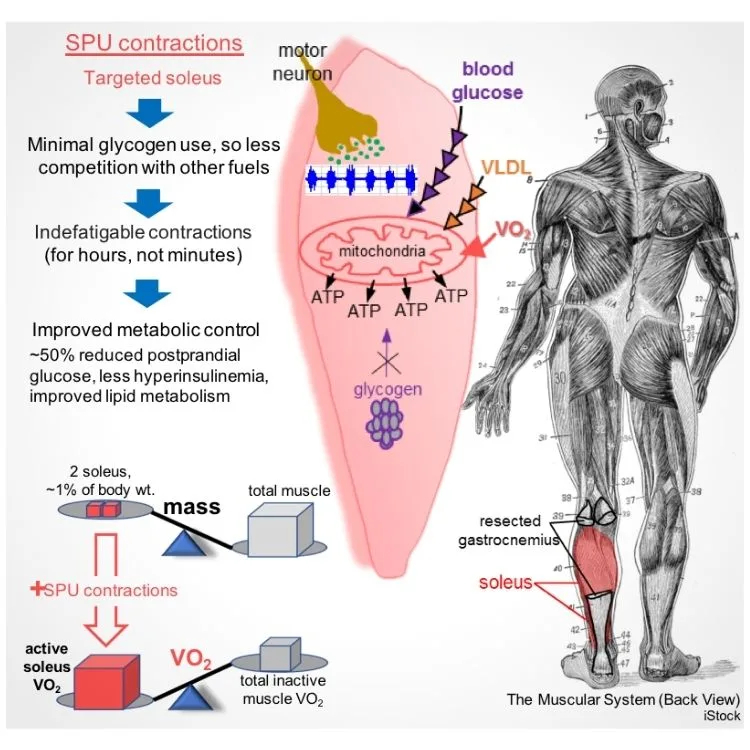
Hamilton, MT. et al. (2022) iScience. A potent physiological method to magnify and sustain soleus oxidative metabolism improves glucose and lipid regulation. SPU = soleus pushups.
The entire human musculature is the body’s largest lean tissue mass, yet accounts for only about 15% of the body’s metabolism of glucose while at rest (basal metabolism). Given that the soleus is a very small part of our overall musculature, it has a surprising effect on metabolism.
The study showed that the human soleus muscle could raise local oxidative metabolism to high levels for hours without fatigue by performing soleus pushups. Muscle biopsies revealed there was minimal glycogen use by the soleus — these muscles used glucose, not gylcogen usually preferred by muscles when being exercised.
Not only did participants’ blood sugar and insulin become lower, but soleus pushups also improved systemic VLDL-triglyceride and glucose homeostasis by a large magnitude, as Figure 3 (glucose and insulin) and Figure S8 (VLDL triglyceride and particles) of the study indicate below.
Lower blood sugar and insulin
- “SED Control” is the sedentary group that did not actively participate in the study.
- “SPU1” is the soleus pushups group at a METs of 1.31.
- “SPU2” is the soleus pushups group at a METs of 1.69.
- One MET is an individual’s resting (or basal) metabolic rate, and is approximately 3.5 milliliters of oxygen consumed per kilogram body weight per minute (mL/kg/min). This represents the amount of oxygen used by the body while at rest (such as what you’re doing right now while reading this article, I presume). An activity that is 4 METs requires the body to use approximately four times as much oxygen than when at rest, which means it requires more energy and burns more calories.
So, now armed with definitions, dig in and I’ll see you below to do some explaining.
Overall, the more METS (SPU2), the greater the impact on lowering blood glucose and insulin.
SPU1 (METs = 1.31):
- ↓ 39% glucose
- ↓ 41% insulin
- Postprandial metabolism index: Dropped to about 60% of the postprandial glucose and insulin secretion of the SED group.
SPU2 (METs = 1.69):
- ↓ 52% glucose
- ↓ 60% insulin
- Postprandial metabolism index: Dropped to about 40% of the postprandial glucose and insulin secretion of the SED group.
See Table 2 for complete results of the energetics for SPU1 and SPU2. Responses reveal a robust soleus muscle activity-dependent glucose and insulin lowering in each individual.
Lower VLDL triglyceride and fewer particles
Very Low Density Lipoprotein (VLDL) is one of the three main types of lipoproteins. VLDL contains the highest amount of triglycerides (fat in your bloodstream). VLDL is a type of “bad cholesterol” because it helps cholesterol build up on the walls of arteries.
VLDL Particles mainly carry triglycerides to your tissues. VLDL is similar to LDL cholesterol, but LDL mainly carries cholesterol to your tissues instead of triglycerides.
So, ideally, you want low VLDL Triglyceride and fewer VLDL Particles. And that’s just want the soleus pushupers got. The bar charts below show how VLDL Triglyceride and Particles were lowered by soleus pushups, indicated below by Active (no attributable METs that I could find).
Figure S8 (from Supplemental Materials linked to from the study
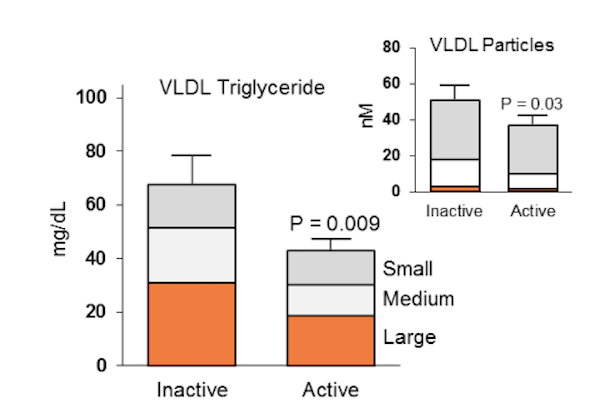
Figure S8 from https://www.ncbi.nlm.nih.gov/pmc/articles/PMC9404652/#, “Supplementary Materials”. Tables show VLDL triglyceride responses to SPU contractions in Experiment I, related to Table 1 and Figure S7. The three subfractions of VLDL determined by nuclear magnetic resonance spectroscopy are shown. P-values from paired t-test analyses. Mean ± SEM.
It’s apparent that soleus pushups confer some desirable health benefits. But how do you do them?
How To Do Soleus Pushups
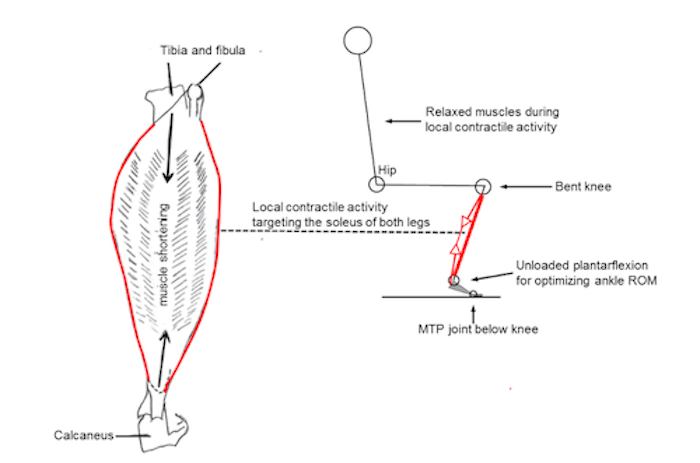
Figure S2 in Supplementary Materials. Link located here: https://www.ncbi.nlm.nih.gov/pmc/articles/PMC9404652/#
This is easy, but you need to be precise, because form matters. The aim of soleus pushups is to simultaneously shorten the calf muscle while the soleus is naturally activated by its motor neurons.
Here’s how you do soleus pushups:
(1) Sit with your feet flat on the floor. You can do this with one leg at a time or both, but I suggest you begin with one leg at a time until you perfect the movement.
(2) Shift your knee forward a bit, so if you were to drop a plumb line from you knee it would touch your foot’s metatarsophalangeal joint, located approximately at the ball of your foot. (See diagram above.)
(3) Lift your heel off the floor as far up as it will go. Pause for a second or two, then lower it back to the floor.
(4) Once you get the feel of it, you should be able to sustain this activity for 10 minutes or longer.
(To see a video demonstration, scroll back up to the video and go to time stamp: 0.42.)
Although it appears that soleus pushups mirror the same biomechanics as walking, the soleus is activated differently when doing a seated soleus pushup versus standing or walking. Muscle biopsies done in the study revealed there was minimal glycogen contribution to fueling the soleus. This is in contrast to standing or walking activities which use a mixture of other fuels, including glucose and fat, for energy. This lower reliance on glycogen is what helps the soleus work for hours without fatiguing.
What I’m going to do
What the heck… I’m going to try it.
If you’ve read my Exercise Snacks post, you know that I aim to get off my arse every hour on the hour and do one to two minutes of exercise that will either improve mobility, get my heart racing, or build some muscle. I do this to avoid the six ways sitting can kill me.
Although I haven’t measured it, it’s reasonable that such consistent activity throughout the day would elevate my overall metabolic rate. Rather than fitter-jitter at my desk, I intend to do some soleus pushups. It will be interesting to find out how long I can do soleus pushups without tiring. I’m guessing I’ll wind up doing them in something like five, ten minute sets, and see how that feels.
Last Updated on November 12, 2022 by Joe Garma

